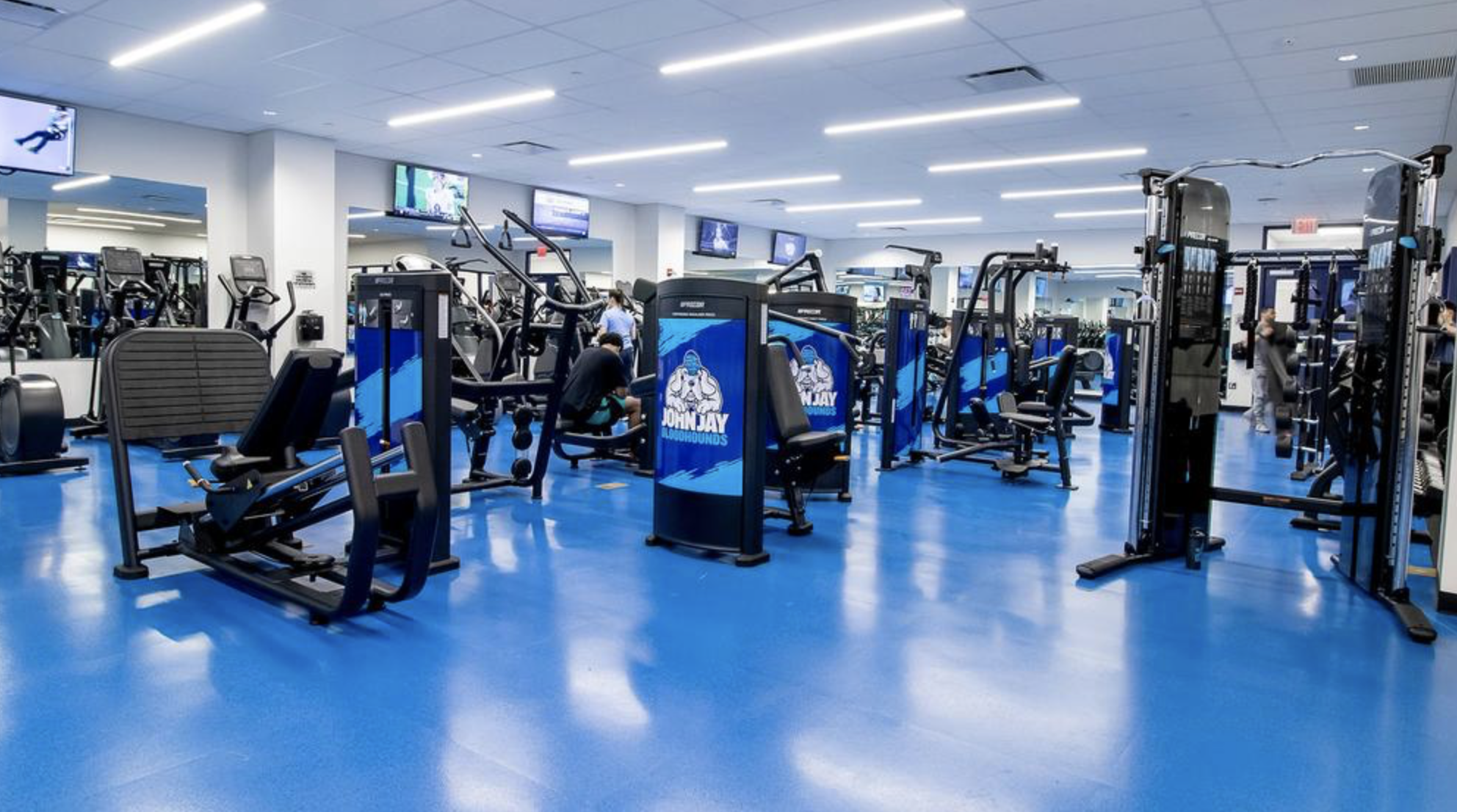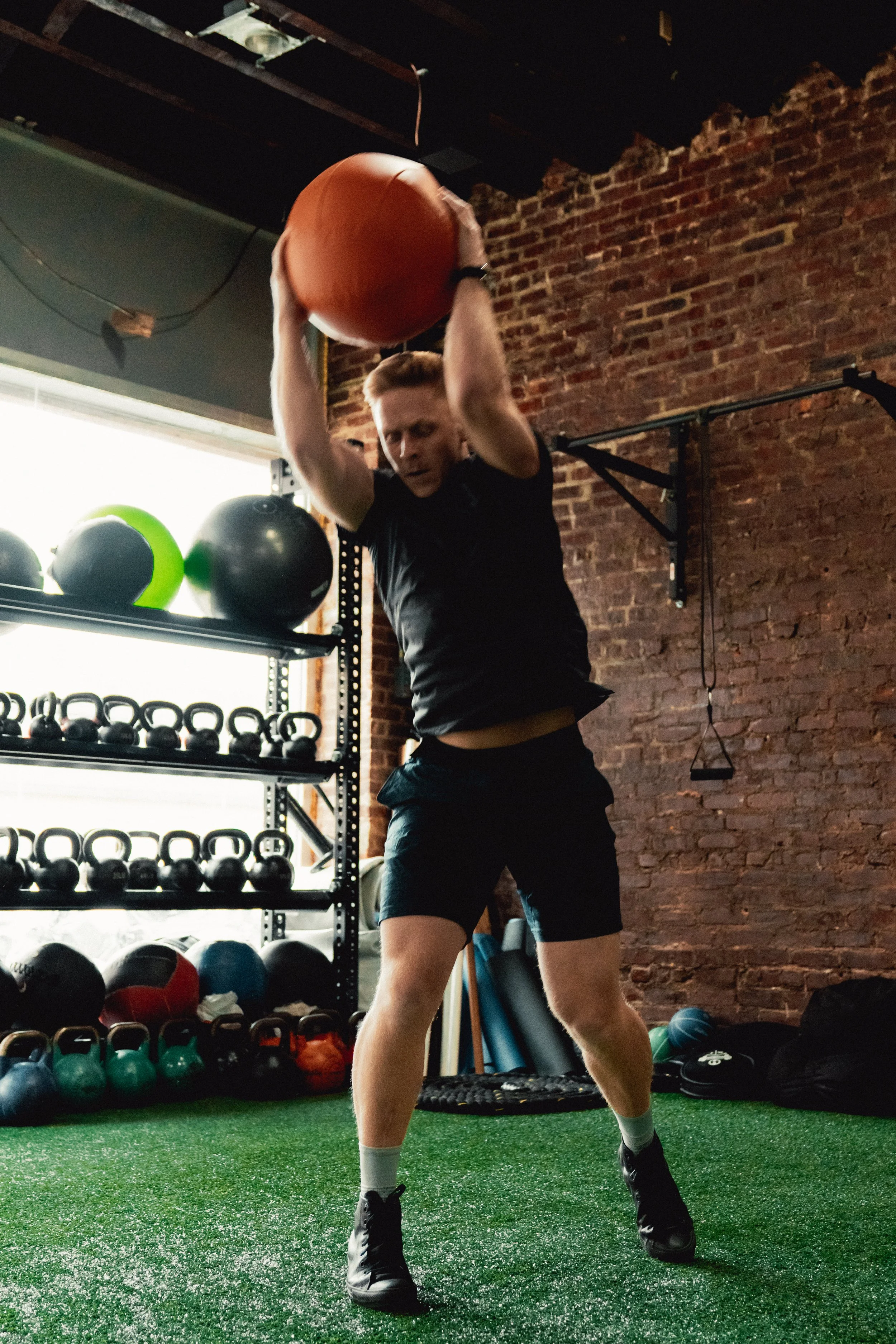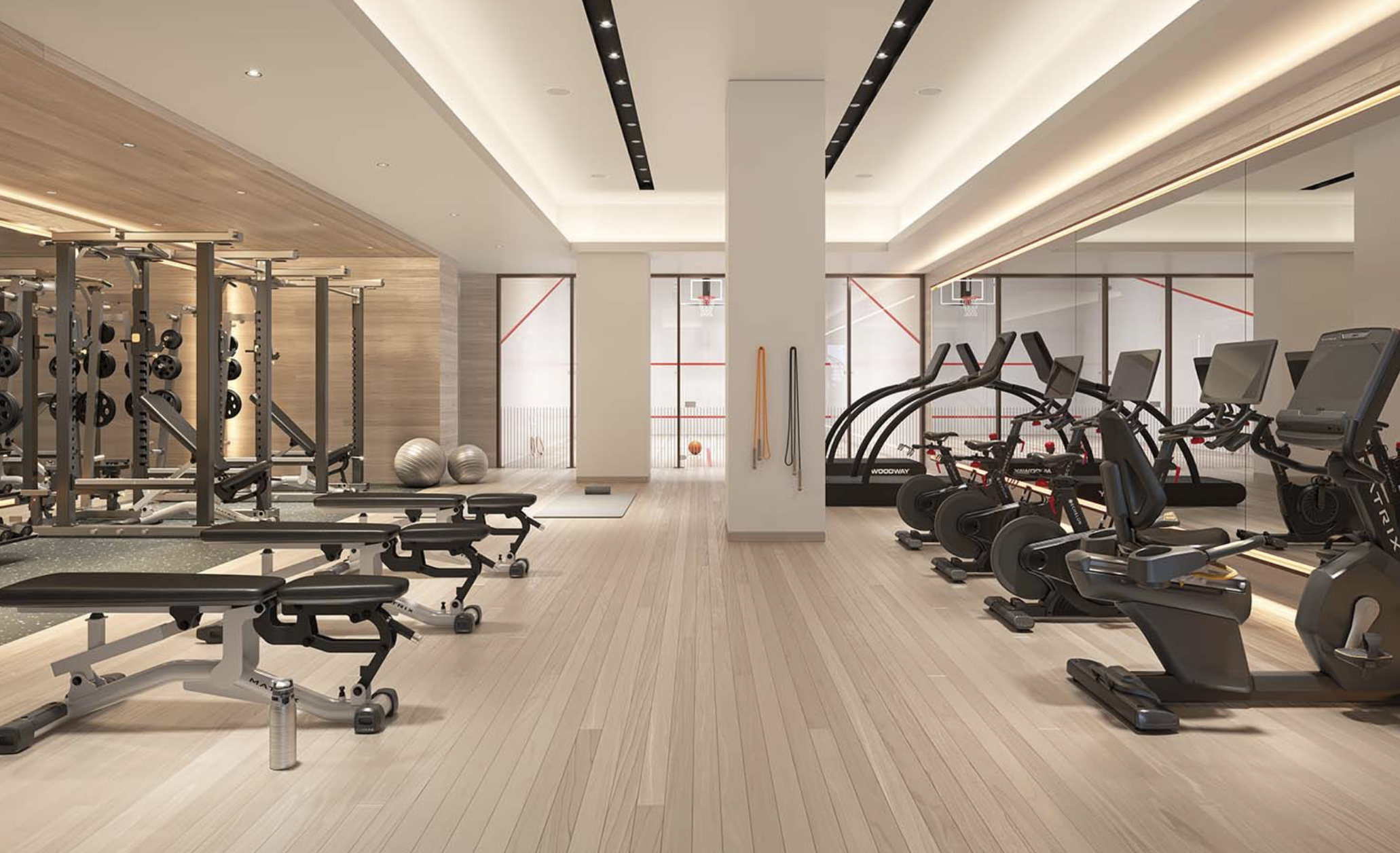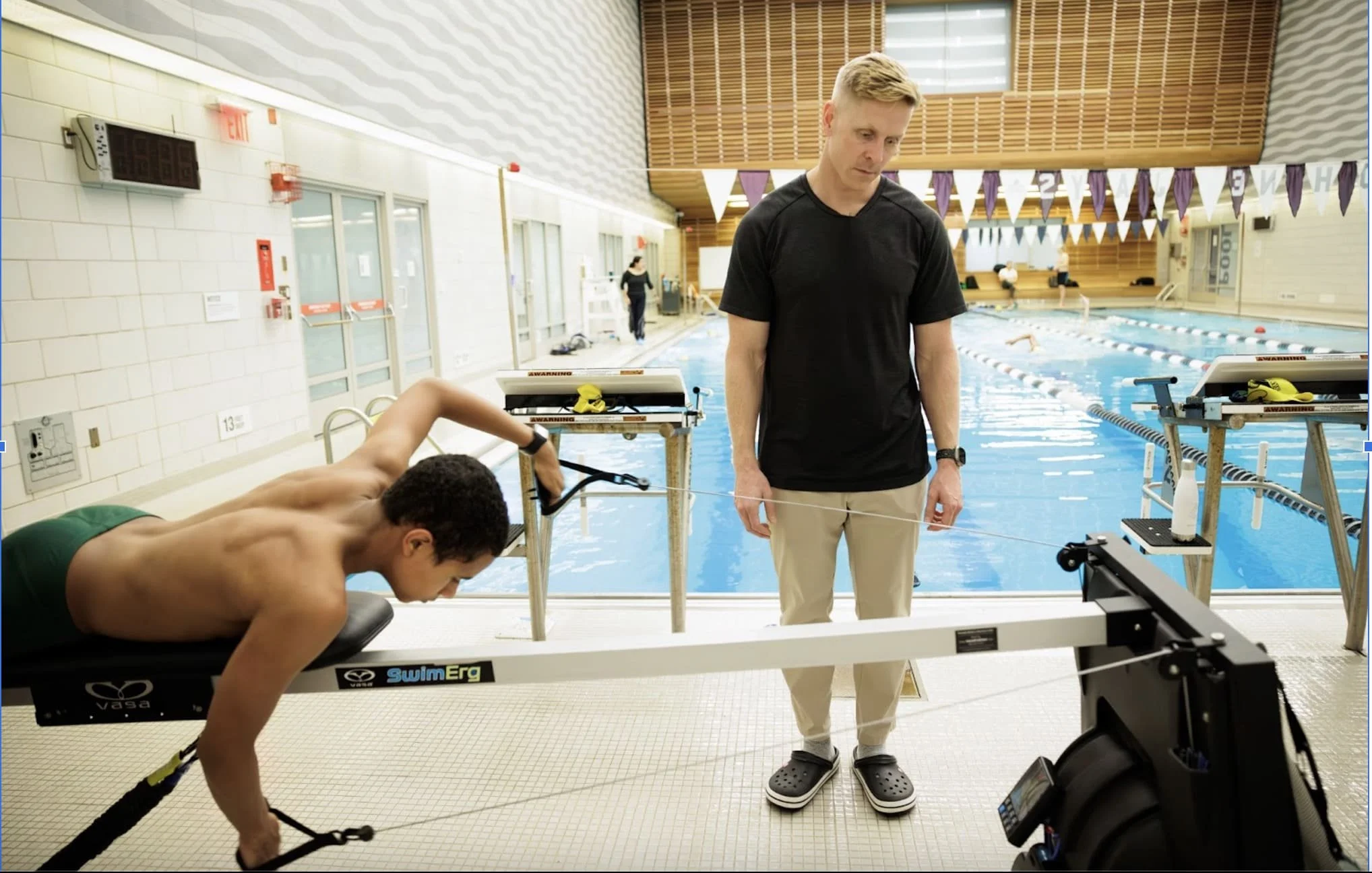Dryland Coaching for Swimmers
When it comes to improving swimming performance, success isn’t just built in the water—it starts on land. Dryland training is the cornerstone for developing mobility, strength, and power that transfers seamlessly to the pool or open water. Dan Daly’s Dryland coaching programs are designed to elevate your swimming!
Virtual Coaching
Virtual Dryland Coaching for Swimmers -Train Anywhere, Achieve More.
1. Virtual Coaching Session
Virtual Coaching Sessions are ideal for swimmers out worldwide, who want access to the best coaching, but may live out of market. Training virtually also provides the flexibility of training from home or their local gym. This virtual coaching for swimmers focuses on personalized dryland workouts tailored to your goals, available equipment, and space.
During these 60-minute online sessions, Coach Dan will:
Assess your current fitness level.
Provide customized exercises that enhance your swimming performance.
Offer guidance on dryland exercises specific for swimmers
Deliver homework and programming via an easy-to-use app for ongoing accountability.
With virtual dryland coaching, you get expert guidance no matter where you are, allowing you to integrate dryland training into your swimming program.
Coaching at John Jay College
Swim Stronger with Expert 1-1 Gym Coaching in NYC
2. Coaching at John Jay College Gym
Live in, or visiting New York City? Take advantage of 1-1 gym coaching at the state-of-the-art facilities at John Jay College Athletics in Manhattan. This 55-minute session focuses on:
Dryland training for swimmers, including mobility, strength, power, and Vasa Trainer.
Movement assessments to identify areas for improvement.
Comprehensive goal planning to align your training with your performance targets.
Access to locker rooms, showers, and all necessary gym amenities.
1-1 Dryland training is perfect for swimmers seeking the focused attention of in-person coaching in a professional gym environment.
Coaching at Uptown Movement
Train Strong in Uptown Manhattan—Personalized Dryland Coaching in a Functional Space
3. Uptown Movement Coaching
Located in the heart of Uptown Manhattan at Uptown Movement Gym, this option offers a one-hour session in a functional space that includes indoor and outdoor areas with personalized dryland training.
Tailored to your individual needs, these sessions emphasize:
Building strength and endurance through dryland workouts for swimmers.
Incorporating functional movements that directly enhance your swim mechanics.
Developing the function and work capacity to reduce your risk of injury in the water.
Uptown Movement Coaching provides a welcoming space for swimmers to push themselves while benefiting from the expertise of a personal coach.
Coaching at Your Private Gym
Expert Coaching, Your Gym, Your Terms—Personalized Training
4. Coaching at Your Private Gym
For swimmers who prefer convenience, Coach Dan can meet you at your private gym. These sessions provide the same expert guidance with the added benefit of training in a familiar environment with your own equipment.
You’ll receive:
Customized swimming dryland workouts tailored to your space’s equipment.
A mix of mobility, resistance training, and conditioning.
Personal coach’s attention to help you achieve your goals efficiently.
Whether you’re looking for virtual coaching or exploring in-person coaching, this option ensures you get a top-tier experience in your own space.
What Is Dryland Training for Swimmers?
Dryland strength training for swimmers is essential for reducing injury, and improving performance. By improving muscular balance, core strength, and overall mobility, it directly supports a stronger streamline and more efficient stroke mechanics. Additionally, incorporating dryland breathing exercises helps swimmers develop better breathing efficiency, a critical skill for optimizing endurance and recovery during swims. At Train Daly, we focus on creating personalized dryland plans that deliver results both in and out of the pool.
Dryland Coaching by Dan Daly
Meet Your Coach: Dan Daly
Coach Dan Daly, CSCS, brings years of expertise in strength and conditioning specifically tailored for swimmers. His dryland training programs bridge the gap between land-based exercises and aquatic performance. Dan’s 1-1 and group coaching sessions, and remote programs are rooted in science-backed methods, personalized attention, and a commitment to helping swimmers excel at every level.
Dryland Coaching Options
To accommodate your unique needs and preferences, Coach Dan Daly offers several options for dryland training, each designed to fit seamlessly into your routine. Whether you prefer virtual coaching, in-person training, or a mix of both, there’s a plan for you.
The Benefits of Dryland Swimming
Dryland swimming is more than just strength and conditioning. It’s about creating a swimmer who is efficient, resilient, and balanced in every stroke. Dryland workouts improve:
Power and Strength: Targeted exercises translate into stronger kicks and pulls.
Breathing Efficiency: Learning dryland breathing exercises for swimmers helps conserve energy and improves technique.
Mobility and Range of Motion: A swimmer’s flexiblity plays a crucial role in stroke efficiency and injury prevention.
Core Stability: Core exercises ensure proper alignment, posture, and streamline, during swims.
Through dryland training for swimmers, you’ll build the tools necessary to excel in the water while avoiding overuse injuries.
Why Choose Dan Daly’s Dryland Coaching?
Dryland Coaching stands out because they’re designed specifically for swimmers. Every movement and exercise is purposeful, targeting the muscles and skills swimmers rely on most. Dan combines his background in strength coaching with a deep understanding of swim mechanics from his competitive swimming to offer the best personal training coach experience.
By leveraging virtual training sessions, in-person coaching, and remote programming tools, Dan ensures every swimmer receives the support they need to thrive.
Get Started Today
Ready to take your swimming to the next level? Contact Coach Dan Daly today to learn more about personalized dryland coaching options. Whether virtual, in-person, or remote, Dan will help you achieve your goals with tailored guidance and expert support. Have questions?
Dryland Coaching - FAQ
-
Dryland training for swimmers refers to land-based exercises designed to improve mobility, strength, and power. These workouts complement in-water training by building the foundational physical attributes swimmers need for injury reduction, overall fitness, and better performance.
-
Dryland workouts for swimmers develop:
Mobility for better range of motion and stroke efficiency.
Core and joint stability for better posture, alignment, and streamline.
Endurance for sustained energy and power through longer swims.
Strength for improved force production in the stroke, kick, walls, and starts.
-
Dan Daly’s dryland coaching is ideal for:
Competitive swimmers looking to improve their performance.
Triathletes aiming to build endurance and strength.
Fitness enthusiasts exploring the benefits of swim-specific workouts.
Open-water swimmers preparing for events.
-
Coach Dan Daly offers several flexible options:
Virtual Coaching Session: Train from home or your gym with personalized, online coaching.
Coaching at John Jay College Pool and Gym: In-person 1-1 sessions in a professional pool and gym environment in NYC.
Uptown Movement Coaching: Personalized training sessions at Uptown Movement Gym in Manhattan.
Coaching at Your Private Gym: Receive expert guidance at your personal pool or gym.
-
In a virtual coaching session, you’ll receive:
Personalized training based on your goals, equipment, and space.
A detailed plan for swimming dryland workouts.
Guidance on specific dryland exercises for swimmers.
Post-session homework and accountability beyond the session through an app.
-
Before your first session:
Complete the required forms provided by Coach Dan.
Share your goals, fitness history, and any injuries or limitations.
For virtual sessions, ensure you have a clear space to perform exercises and that your camera setup allows you to be seen head to toe. A pair of bluetooth headphones are helpful in noisier spaces.
-
No extensive equipment is necessary, but the following items can enhance your training:
Kettlebells or Dumbbells
Pull Up Bar
Suspension Trainer like TRX
Stability and Medicine Balls
Foam Roller or Trigger Point Ball
Coach Dan will customize your plan based on the equipment you have access to, and suggest additional items.
-
Absolutely! Coach Dan works with swimmers of all levels, from beginners to elite athletes. Each program is tailored to match your current fitness level and help you progress toward your goals.
-
To book a session, contact Dan Daly directly or navigate the website to choose the coaching option that fits your needs, and Coach Dan will guide you through the next steps to get started.
-
Contact Coach Dan directly to inquire about packages for multiple sessions, small group discounts, and programming for every price point.
-
Yes! Dan Daly’s coaching is flexible, allowing you to alternate between virtual and in-person sessions to fit your schedule and preferences.





